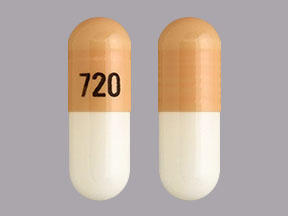Budesonide Side Effects
Medically reviewed by Drugs.com. Last updated on Jun 10, 2024.
For healthcare professionals
Applies to budesonide: compounding powder, inhalation powder, inhalation suspension, oral capsule extended release, oral delayed release capsule, oral suspension, oral tablet extended release, rectal foam.
General adverse events
The most commonly reported adverse events with inhaled use have included nasopharyngitis, nasal congestion pharyngitis, rhinitis, and oral candidiasis. Headache, nausea, abdominal pain, and fatigue have been commonly reported with oral and rectal use. Due to the nature of its administration (inhalation, gastro-protective oral formulations, and rectal enema), it is less likely to cause systemic adverse effects associated with the use of corticosteroids.[Ref]
Respiratory
- Very common (10% or more): Respiratory infection (up to 13%)
- Common (1% to 10%): Nasopharyngitis, nasal congestion, pharyngitis, allergic rhinitis, viral upper respiratory tract infection, epistaxis, cough, dysphonia, hoarseness
- Frequency not reported: Bronchitis, dyspnea, pharynx disorder, pneumonia
- Postmarketing reports: Throat irritation, sinusitis[Ref]
Endocrine
- Common (1% to 10%): Decreased blood cortisol, moon face
- Uncommon (0.1% to 1%): Hirsutism, Cushingoid syndrome
- Frequency not reported: Intermenstrual bleeding, menstrual disorder, HPA axis suppression, deaths due to adrenal insufficiency
- Postmarketing reports: Hypocorticism[Ref]
Immunologic
- Common (1% to 10%): Oral candidiasis
- Frequency not reported: Immunosuppression, abscess, bronchospasm in patients with severe milk protein hypersensitivity[Ref]
Gastrointestinal
- Very common (10% or more): Nausea (up to 13%); abdominal pain (21%)
- Common (1% to 10%): Viral gastroenteritis, gastrointestinal mucosal candidiasis, upper abdominal pain, flatulence, abdominal distension, constipation, dyspepsia, vomiting, diarrhea, sore/irritated throat, dry mouth, bad taste, rectal disorder, rectal hemorrhage, ulcerative colitis, burning in the rectum or pain
- Frequency not reported: Anus disorder, enteritis, epigastric pain, gastrointestinal fistula, glossitis, hemorrhoids, intestinal obstruction, tongue edema, tooth disorder
- Postmarketing reports: Pancreatitis[Ref]
Nervous system
- Very common (10% or more): Headache (up to 28%)
- Common (1% to 10%): Dizziness
- Uncommon (0.1% to 1%): Disturbance of smell
- Very rare (less than 0.01%): Pseudotumor cerebri (including papilledema)
- Frequency not reported: Hyperkinesia, paresthesia, tremor, somnolence
- Postmarketing reports: Benign intracranial hypertension[Ref]
Psychiatric
- Common (1% to 10%): Mood changes, sleep changes, insomnia,
- Frequency not reported: Amnesia
- Postmarketing reports: Psychosis, depression, aggressive reactions, irritability, nervousness, restlessness, anxiety, mood swings[Ref]
Hypersensitivity
- Frequency not reported: Hypersensitivity reactions including anaphylaxis, rash, contact dermatitis, urticaria, angioedema, bronchospasm
- Postmarketing reports: Cough, wheezing, bronchospasm[Ref]
Musculoskeletal
- Very common (10% or more): Muscle spasms (12%)
- Common (1% to 10%): Arthralgia, back pain
- Very rare (less than 0.01%): Osteoporosis, aseptic necrosis of bone (femur and head of the humerus)
- Frequency not reported: Bone mineral density reductions, arthritis, myalgia, growth suppression[Ref]
Cardiovascular
- Very common (10% or more): Hypertension (12%), peripheral edema (17%)
- Common (1% to 10%): Fluid retention, palpitation
Uncommon (0.1% to 1%):
- Frequency not reported: Tachycardia, chest pain, flushing[Ref]
Metabolic
- Frequency not reported: Weight gain, increased appetite, hypokalemia[Ref]
Hematologic
- Common (1% to 10%): Leukocytosis
- Uncommon (0.1% to 1%): Anemia
- Rare (0.01% to 0.1%): Eosinophilic conditions, Churg-Strauss[Ref]
Ocular
- Common (1% to 10%): Conjunctivitis
- Frequency not reported: Eye abnormality, abnormal vision
- Postmarketing reports: Glaucoma, cataracts, increased intraocular pressure[Ref]
Genitourinary
- Common (1% to 10%): Urinary tract infection, moniliasis
- Frequency not reported: Dysuria, micturition frequency, nocturia[Ref]
Dermatologic
- Very common (10% or more): Acne (11%)
- Common (1% to 10%): Rash, contact dermatitis, eczema, pustular rash, pruritus, purpura
- Very rare (less than 0.01%): Allergic exanthema, red striae, petechiae, ecchymosis, delayed wound healing
- Frequency not reported: Face edema, alopecia, dermatitis, eczema, skin disorder, increased sweating, purpura
- Postmarketing reports: Skin bruising[Ref]
Hepatic
- Uncommon (0.1% to 1%): Increase in liver enzymes[Ref]
Other
- Common (1% to 10%): Otitis media, fatigue, earache
- Frequency not reported: Asthenia, malaise, fever, flu-like disorder, vertigo[Ref]
See also:
References
1. (2001) "Product Information. Pulmicort Respules (budesonide)." Astra-Zeneca Pharmaceuticals
2. (2001) "Product Information. Entocort (budesonide)." AstraZeneca Pharma Inc
3. (2013) "Product Information. Uceris (budesonide)." Santarus Inc
4. (2016) "Product Information. Pulmicort Flexhaler (budesonide)." A-S Medication Solutions
5. (2016) "Product Information. Entocort EC (budesonide)." Perrigo, L. Company
6. (2024) "Product Information. Eohilia (budesonide)." Takeda Pharmaceuticals America
Frequently asked questions
More about budesonide
- Check interactions
- Compare alternatives
- Pricing & coupons
- Reviews (200)
- Drug images
- Dosage information
- During pregnancy
- Support group
- Drug class: glucocorticoids
- Breastfeeding
Patient resources
Other brands
Pulmicort Flexhaler, Eohilia, Pulmicort Turbuhaler, Uceris, ... +4 more
Professional resources
- Budesonide (Systemic, Oral Inhalation) monograph
- Budesonide Capsule (FDA)
- Budesonide Capsule Delayed Release (FDA)
- Budesonide ER Tablets (FDA)
- Budesonide Inhalation Suspension (FDA)
- Budesonide Rectal Foam (FDA)
Other brands
Pulmicort Flexhaler, Eohilia, Pulmicort Turbuhaler, Uceris, ... +3 more
Related treatment guides
Further information
Budesonide side effects can vary depending on the individual. Always consult your healthcare provider to ensure the information displayed on this page applies to your personal circumstances.
Note: Medication side effects may be underreported. If you are experiencing side effects that are not listed, submit a report to the FDA by following this guide.

